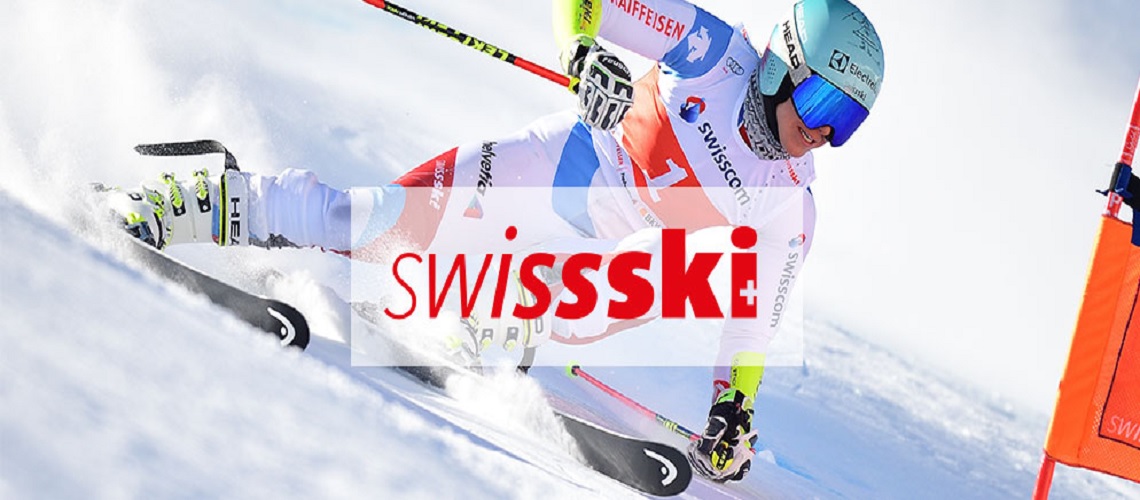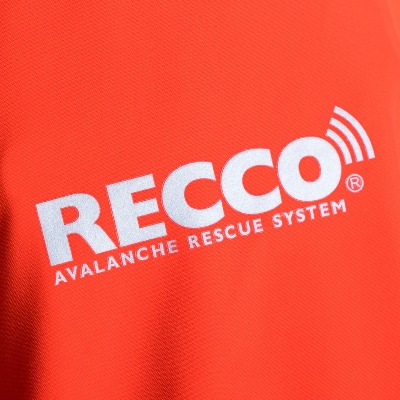Reusser & Diegoüger Talk About First Yaer As Swiss-Ski Co-CEOs

Walter Reusser (Sports Division) and Diegoüger (Commercial Division) took over the operational management of Swiss-Ski as co-CEOs at the start of the 2023/24 season. In the interview, after their first year together at the helm of the association, the two talk about, among other things, the outstanding season in the Alpine Ski World Cup, the challenges they have overcome and still have to overcome, as well as their collaboration in a new role - and they are already looking ahead to the coming season with the two home world championships in biathlon and ski freestyle/snowboard.
With the recent victory in the national rankings, the triumphs in the overall World Cup for Lara Gut-Behrami and Marco Odermatt as well as five small crystal balls, Swiss-Ski experienced a winter in the Alpine that was only topped in the 1986/87 season. It can hardly get any better.
Walter Reusser: Basically you shouldn't see it that way. Rather, the results show that we can be proud of the work being done in the alpine sector. We manage to support the large number of athletes in order to be successful in the races. We are happy to be able to bear responsibility for Swiss-Ski at a time in which the team, led by figureheads like Lara Gut-Behrami and Marco Odermatt, shows outstanding performances week after week.
What significance do the previously mentioned Marco Odermatt and Lara Gut-Behrami have for the association - apart from World Cup victories and crystal balls?
Reusser: They give the team great stability and security. The other team members know that there are top athletes among them who are happy with the conditions we offer them and who challenge us at the highest level. For their teammates, they are the perfect yardstick – in every single training session. On the other hand, Marco and Lara, who have proven several times that they can handle high expectations, also take pressure from the other athletes as driving forces.
Diegoüger: Sporting success is the basis for being able to market Swiss snow sports, for people to be interested in them and for positive emotions to be created. We can consider ourselves lucky that we have been very successful in sport for several years. Exceptional personalities like Lara Gut-Behrami and Marco Odermatt manage to get people outside of our actual target group and fan base excited about skiing and get them in front of the TV or at local events.
It is always important to be able to provide our approximately 300 athletes and the entire support staff with the best possible conditions.
What do you remember from the winter of 2023/24 – apart from the outstanding season in alpine skiing?
Reusser: Mathilde Gremaud, for example, always inspires me. She has achieved so much at her age. She left her mark on the Freeski World Cup this winter in an impressive way and became the first freestyler to win three crystal balls. This is simply outstanding. I was also pleased by various developments in the Nordic area. As a somewhat older biathlete, Lena Häcki-Gross has developed into a multiple World Cup winner, in cross-country skiing we were able to experience two podium premieres on the men's side - and in ski jumping, Gregor Deschwanden - after a few years of waiting - once again caused Swiss podium celebrations . What's also impressive is how our ski cross team has been performing at the absolute top level for years.
Zuger: We achieved World Cup podium places in nine out of eleven sports this winter. This shows how successful we are across the board. At this point we would like to express special thanks to our partners, because without their commitment the numerous sporting successes that we have been able to experience would not be possible. What is particularly memorable is when our athletes succeed at the home World Cups - and they achieved this several times last winter. In addition to the Alpine successes in the home classics, I'm also thinking about the podium finishes achieved by our snowboard cross team at the World Cup in the Engadin or by Nadine Fähndrich over 20 km in Goms, which were not necessarily expected. We were able to celebrate snow sports festivals at all home World Cups. A milestone was the first Biathlon World Cup in Lenzerheide with a great backdrop and fantastic weather at the weekend competitions.
What did last season teach you?
Reusser: We were once again shown how close victory and defeat and good and bad luck are to each other. I'm thinking of the various race cancellations and the many, sometimes very serious, crashes and serious injuries. In addition, there are problems and discussions that are internal to snow sports - key words in this regard are the racing calendar or central marketing.
Zuger: From a Swiss perspective, we have once again had one of the most successful sporting seasons behind us; in the alpine area we have improved once again compared to the already exceptionally strong previous season. And yet I feel that there is a slight shadow over winter and snow sports - this is due to the climate issue and various topics surrounding the FIS that Wala just mentioned. The challenges we face on a small scale in Switzerland are much larger globally. I feel this when I have conversations with people outside of Swiss-Ski, especially those from abroad. There are media reports, mostly from abroad, but also a few in Switzerland, in which doomsday scenarios for snow sports are recorded. This discrepancy compared to the local enthusiasm about Swiss snow sports successes is striking and remarkable to me. We must not allow ourselves to be blinded. I think we may be living in a kind of bubble in Switzerland because of our successes. But if we want to further develop our sport worldwide, we face major challenges in order to put it in a more positive light again - beyond the Swiss borders.
Where do you see the greatest need for action with regard to the coming season?
üger: We finally have to take a step forward in the discussions with the FIS about central marketing. Unfortunately, this question also blocks many other topics when it comes to the further development of our sport. We have worked very intensively with the other ski associations over the last few months and now hope to find solutions with the FIS.
Reusser: The challenges are always complex. There are generational changes and injured athletes, which means others have to grow into a new role. We want to continually develop our eleven sports and not just maintain the current level of performance. It is always important to be able to provide our approximately 300 athletes and the entire support staff with the best possible conditions.
üger: With the successes, the demands also increase - among other things with regard to individual support. The financial resources for this must be generated in order to remain competitive and to be able to develop further. It is important not to pat yourself on the back in the here and now when success is there, but rather to focus on what will come in ten years. Mistakes are most often made in phases of success, as we have experienced in the past at Swiss-Ski. If you're riding the wave of success, you can't give up an inch when it comes to promoting young talent and popular sports. We also have to be prepared to invest in digitalization and future marketing potential so that we can ensure or even further increase our high commercial revenues in the long term.
If you're riding the wave of success, you can't give up an inch when it comes to promoting young talent and popular sports.
Not just in ten years, but next winter, there will be two world title fights on the program in our own country: the Biathlon World Championships in Lenzerheide and the Snowboard and Ski Freestyle World Championships in the Engadin. How does Swiss-Ski want to get the most out of these showcase events?
Reusser: It is important to take advantage of the home advantage by trying to hold exclusive training sessions on the World Cup facilities, to know the nature of the snow in detail and to create the best possible conditions in consultation with the local organizing committees. For the athletes, the prospect of taking part in the World Championships in front of a home audience is something unique in their careers. This gives you an extra boost of motivation in the spring when preparation for the season starts. We always see it at the home World Cups: our athletes are supported by the Swiss fans. At the World Championships in Lenzerheide and the Engadine, the support will be even greater.
üger: It should also be mentioned that we want to raise additional financial resources by organizing these world championships. Our World Cup strategy, adopted a few years ago, envisages legacy projects from which future generations can also benefit. Of course, we want to achieve as many top rankings as possible in the two title fights in Graubünden next season, but at the same time we also want to give a top calling card in terms of event organization and fan experience. The images that are sent out to the world from these title fights are intended to put our wonderful mountain world and our top facilities in the best light. We also want to reach new target groups and retain these fans.
Reusser: I would like to emphasize once again what Diego mentioned: The legacy funds in connection with the upcoming World Championships flow particularly to the young talent. They are intended to help young athletes - as successors in the event of the resignation of top cracks - get to the top of the world in the best possible way. The positive energy of these major events serves to further improve the structures.
With the Winter Olympics, the world's largest snow sports event has been a topic in Switzerland for a few months now. How has Swiss-Ski been involved in the Swiss Olympic plans so far – and how is Swiss-Ski currently involved in the “Switzerland 2038” project?
üger: The previously mentioned major event strategy arose against the background that Olympic candidacies in Switzerland have failed several times in recent years. That's why we wanted to bring world championships in our sports to Switzerland, which - as you can see today - we succeeded in doing very well. The fact that the Winter Olympics in Switzerland are now a serious option again is very important for Swiss-Ski and for Swiss sport as a whole. Even if it is a long horizon: we see the “Switzerland 2038” project with the privileged dialogue with the IOC as a great opportunity. The long period of time brings with it a lot of positive things when it comes to pushing forward legacy projects regarding infrastructure and the promotion of young talent. On the way to 2038, we have various major winter sports events in Switzerland. It is important to coordinate all of these events well with one another and thus get the best possible benefit for the sport. It is important to seize this opportunity together as a Swiss sport. If we can show the world how to organize a sustainable Olympic Games, it would be the best advertisement for sport, our youth and a calling card for the entire country.
Reusser: Our expertise at Swiss-Ski in terms of event organization and infrastructure will contribute completely to the 2038 Olympics. Likewise our ambition to host the newly launched FIS Games in the Engadin - with competitions in all sports of the World Ski and Snowboard Association FIS.
We have set ourselves the goal of developing a “Snow Sports 2050” vision by the end of the year. It is important for us to address the issue of climate change and sustainability in the long term.
You have already mentioned the increasing challenge of holding World Cup events due to climate change. How is Swiss-Ski adapting to this?
üger: Together with the Executive Board, we have used the current discussion as an opportunity to think more deeply about where snow sports are developing in the long term. We have set ourselves the goal of developing a “Snow Sports 2050” vision by the end of the year. It is important for us to address the issue of climate change and sustainability in the long term. The World Cup events mentioned are central when it comes to the implementation of our sports. Their importance is correspondingly high - and it is correspondingly important to think about smart event planning in order to minimize possible cancellations. But we have to be clear: There have always been rejections - and unfortunately there will always be rejections. We practice an outdoor sport. On the one hand, there are high-class events in fantastic weather and in front of a unique mountain panorama that - and I am convinced - no other sport can offer. On the other hand, if the weather goes the other way, the risk of cancellation is high. In contrast to other sports associations, we have this great tension.
Reusser: It takes cooperation between international and national associations as well as local organizers. The races should take place when it makes the most sense for the respective region and when there is the greatest chance of taking place. And they should be planned in such a way that the competitions are predictable for the athletes in terms of stress. The World Cup must be seen as an event series - and the goal should be that the best do not voluntarily skip races, but are at the start everywhere.
In recent months, snow sports have been criticized for their lack of sustainability. What efforts is Swiss-Ski making in this area?
Zuger: Swiss-Ski implemented a sustainability strategy until 2030 a year ago. As part of this, we are pursuing various approaches to make snow sports more sustainable. The sustainability strategy includes goals on three levels: Swiss-Ski as an organization, Swiss-Ski as a (co-)organizer of snow sports events and Swiss-Ski as a leader of the snow sports community. At the event level - from recreational sports events to the World Championships - Swiss-Ski supports the organizers with tools, know-how and its network so that the events can be organized and carried out more sustainably. In the other two levels we focus on the topics of energy and infrastructure, mobility, materials, gender equality & equity and legacy. Goals include, for example, optimizing and electrifying the vehicle fleet, increasing precision in materials by optimizing order quantities or increasing the proportion of women in functions in snow sports. As a further measure, Swiss-Ski founded the Snowstainability association together with its sustainability partner BKW in the summer of 2022. The association provides financial support for projects in Switzerland that aim to make snow sports more sustainable. Examples include the LED lighting at the Einsiedeln ski jump or the solar start house at the World Cup in Zermatt.
Reusser: In order to make the work of the organizing committees easier, Snowstainability also supports the development of a guide for sustainable snow sports events. We are in close contact with the organizers about this. At the Biathlon World Cup in Lenzerheide, for example, a new arrival and departure concept was used for the first time, in which the public transport ticket was included in the event ticket. Our overarching goal is to ensure that snow sports can be ensured and practiced by future generations of athletes. That’s why we are now working – together with all relevant stakeholders – to develop the long-term vision “Snow Sports 2050”. This applies to all dimensions of sustainability, i.e. ecological, economic and social.
As part of sustainability efforts, a ban on fluorine waxes was introduced for the 2023/24 season. How satisfied are you with Swiss-Ski's implementation?
Reusser: We invested in the non-fluorine strategy four years ago because we knew that a possible ban on fluorine waxes would be a game changer. Together with the Zurich University of Applied Sciences (ZHAW), we have launched corresponding projects and worked intensively on non-fluorine solutions. We are very satisfied with how we were able to be competitive in the past World Cup winter with our own, self-developed products. This shows the high use of our own products at all levels of competition. Our approximately 60 service people used our own products in an average of 90 percent of all competitions.
Is there a plan to make the self-developed non-fluoro waxes available for popular sports in the future?
Reusser: Once it was clear that the products worked very well at the highest level, there was quickly high demand from young talent and popular sports. Accordingly, we decided to convert the prototyping into our own wax brand and make it available to the general public. From summer 2024, the waxes with the name Fzero (fzero.ch) can be purchased, on the one hand from selected specialist retailers and on the other hand via Swiss-Ski's own e-shop.
üger: All of this fits perfectly into our strategy of generating new sources of revenue in order to be able to further develop the sport at all levels. Every Swiss snow sports fan has the opportunity to purchase a wax product from us for their own use, which is also used by our athletes at the highest level.
We want to further develop snow sports together with our base, and to do this we need to make their voices heard.
You have been acting in the co-CEO role for a year. In what respects has the dual leadership that Swiss-Ski has established for the 2023/24 season been successful - and where is there still potential for improvement?
Reusser: The challenges at Swiss-Ski are extremely broad. It is above all the complexity of the topics that led to the implementation of dual leadership. As an association, we want to be among the world leaders in every area; our external perception is very high. The association as a whole is easier to manage if you can focus on certain areas at the top management level. We have succeeded very well in separating sport from other difficult topics. I see this as a great added value because it allows our athletes to focus on the sport.
Zuger: The diversity and complexity of the topics that affect us, combined with their high external impact, make it easier to spread the whole thing over four shoulders. I can only underline the advantages that Wala mentioned.
What are the biggest challenges that come with the new co-CEO role?
üger: In my opinion, the most important thing in relation to our collaboration as co-CEO so far is the high learning curve and the great trust that the Executive Board and also the employees have placed in us both. Even if we don't manage to exchange ideas on a topic ad hoc, each of us knows that the other has both areas - sports and commercial - in mind when making decisions. Wala and I have known each other for a long time and have a high level of trust in each other. This is a basic requirement, otherwise the collaboration would not work so well. A dual leadership required a lot of votes. The most important thing, however, is the strong team we have at Swiss-Ski. Each and every one of these employees contributes their part to success. Working in such an exciting environment with so many motivated people is great fun.
Reusser: I would also like to say that we both have the same mindset in the sense of “best argument counts”. It's about finding the best solution for Swiss-Ski together. Our COO and CFO Claudia Lämmli plays an important role in the association's management, supporting both of us in the services area. We can also count on the support of our employees on our journey, who contribute their great know-how to the benefit of Swiss snow sports either out in the snow or at our new association headquarters in Worblaufen - always combined with passion and great commitment.
In which areas can you benefit from each other?
Reusser: We have known each other for 20 years. Even when we weren't working together, we never lost sight of each other. A friendship has also developed, meaning that the collaboration is based on a great deal of mutual trust. We know each other's strengths and weaknesses and know where we can support each other.
What strengths do you value in each other?
Reusser: What impresses me about Diego is his quick comprehension and high level of motivation. He also knows competitive sports very well from his time as an active player and brings an enormous amount of know-how to the association's activities - always coupled with a high level of social skills when dealing with employees.
Zuger: What I appreciate about Wala is his large backpack, which is full of sport-specific knowledge. He got to know snow sports from different perspectives like no other. I like his clarity and directness; I am impressed by his networked thinking. I think it's great how he manages to fulfill the role of boss in sport on the one hand, but at the same time also provide support on a collegial basis.
The structural adjustments at Swiss-Ski also affected popular sports, which are to be further strengthened within the association. How exactly is this supposed to happen?
Reusser: Popular sport is the basis of our entire structure - be it through the regional associations and ski clubs, but also through the volunteers. They are the ones who make it possible to hold competitions or train children. It is important that everyone within our snow sports universe knows exactly what their role is. The aim is to inspire members and bind them to the association - not only through the top sporting achievements of our figureheads, but also through direct exchange and cooperation with Swiss-Ski. We want to further develop snow sports together with our base, and to do this we need to make their voices heard.
Zuger: With a view to the long-term development of snow sports, it is essential to pay great attention to popular sports. It is important to create a balance between commercialization and professionalization on the one hand in order to lay a healthy financial foundation for the sport, and on the other hand our large base, which is characterized by volunteer work and passion for snow sports. The whole thing has to be in balance. The needs of our regional associations, ski clubs and members must always be incorporated into our daily work. At the same time, we are fortunate to have a very stable partner structure and have been able to agree long-term partnerships with many sponsors. Thanks to the support of our main partner Sunrise, for example, we are able to open up new business fields in the digital area in order to further develop ourselves as an association. This ultimately benefits the ski clubs and members.
Finally, a look into the crystal ball: Where will Swiss-Ski as an association be in ten years?
Reusser: By then we will have – at least – three home World Cups behind us. And hopefully the Winter Olympics in Switzerland will be just around the corner. We must continue to manage to pass on the values associated with sport to future generations. We want to operate at the highest technical level, take a pioneering role and offer athletes a basis so that they can make a living from their sport. Snow sports must be preserved in their decades-long tradition and importance in our country and – where necessary – modernized.
Zuger: Exactly, because snow sports are a Swiss cultural asset. He needs to be taken care of. In order to lead our sport successfully into the future, I believe it is important to further develop the snow sports product on both a national and global level. It is crucial that the snow sports basics are taken with you on this trip. As many people as possible of all ages and social classes should be infected with the snow sports virus in ten years and come into contact with our beautiful sport and with Swiss-Ski in some way.














